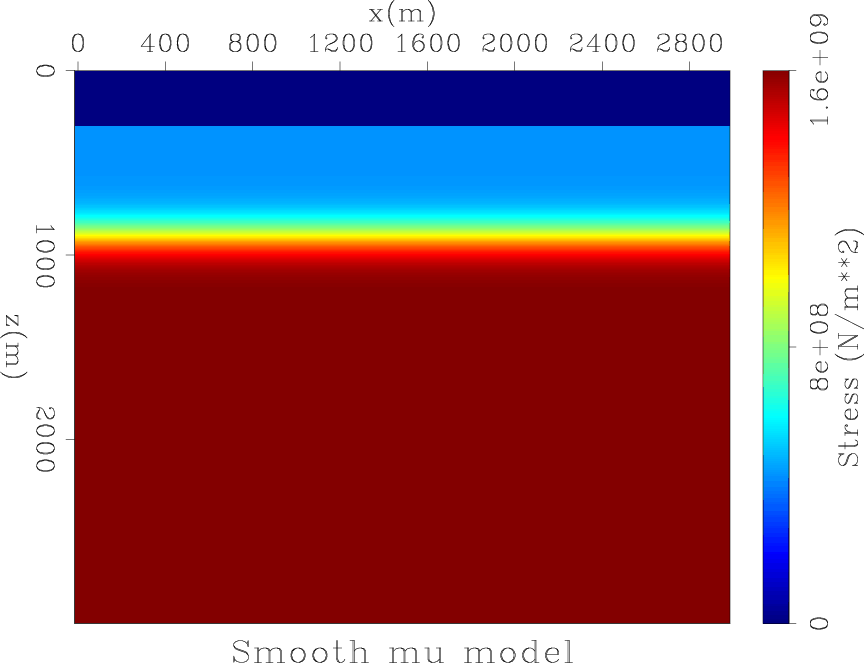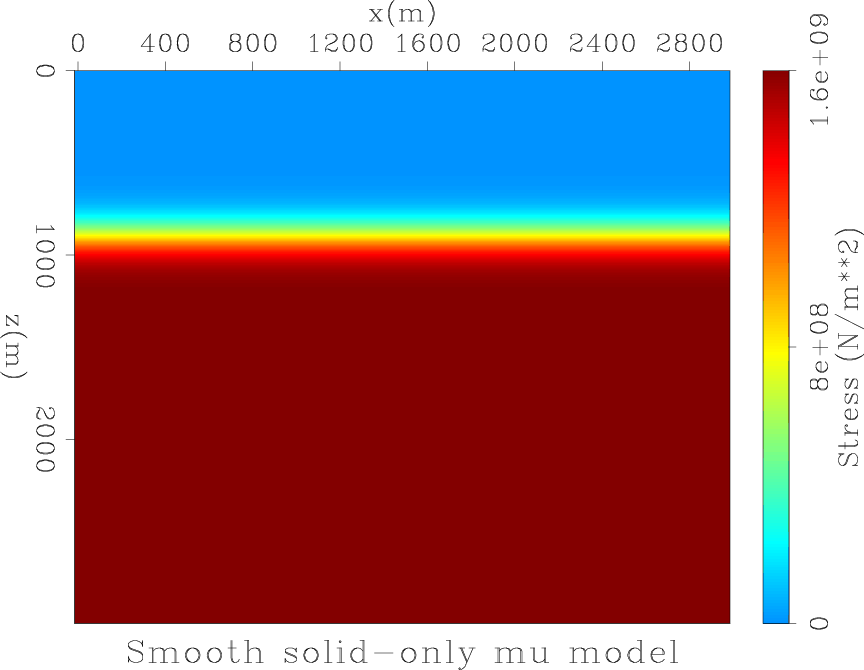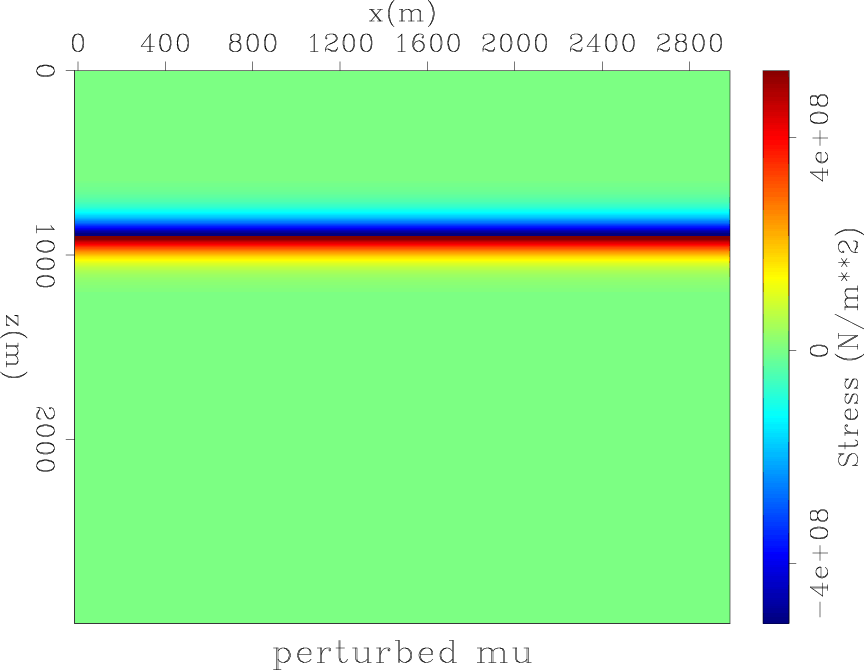|
|
|
|
Elastic Born modeling in an ocean-bottom node acquisition scenario |
Incident smooth models:
![]() .
.
Scattered smooth models:
![]() .
.
Perturbed models:
![]() .
.
Figures 2(a)-2(c) show these three model versions for the ![]() parameter.
parameter.



|
|---|
|
mu2d-smooth,mu2d-smooth-lith,mu2d-del
Figure 2. Top left: Smooth model for incident wavefield. Note the sharp water-solid boundary. Top right: Smooth model for scattered wavefield, where the water has been replaced by the topmost layer. Bottom: The perturbed model, which is the difference between the true model without the water layer and the smooth model without the water layer. Note the lack of a perturbation at the sea bed. |
|
|
For the incident wavefield, the model is smoothed everywhere except for the water-solid interface (Figure 2(a)). For the scattered wavefield, the topmost sediment's model replaces the water column (Figure 2(b)). The perturbed models are the difference between the ``true'' scattered model (water replaced by solid) and the smooth scattered model. Therefore, the perturbed models do not include the water-solid boundary (Figure 2(c)), and as a result no reflection is generated in the scattered wavefield at the sea bed. There is, however, a reflection generated in the incident wavefield at the water bottom, which admittedly is exactly the way Born modeling is not supposed to work. The water-solid substitution also causes wrong kinematics of the scattered wavefield in the water column. Neither of these issues affect the results since all energy is absorbed at the model boundaries, eliminating any free-surface multiples. A different solution will have to be found at a later stage if I wish to incorporate free-surface multiples into the processing.
|
|
|
|
Elastic Born modeling in an ocean-bottom node acquisition scenario |